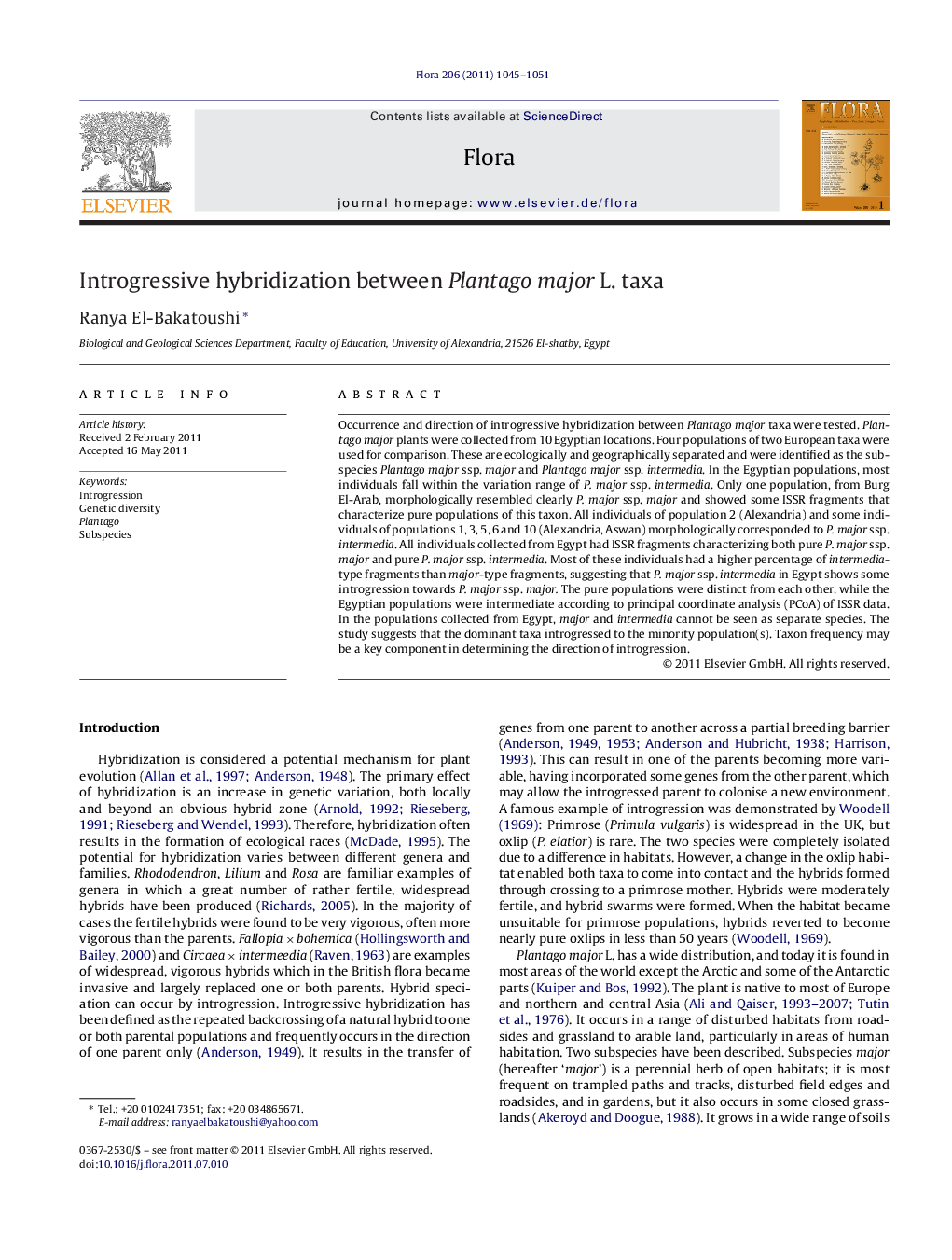| Article ID | Journal | Published Year | Pages | File Type |
|---|---|---|---|---|
| 2179737 | Flora - Morphology, Distribution, Functional Ecology of Plants | 2011 | 7 Pages |
Occurrence and direction of introgressive hybridization between Plantago major taxa were tested. Plantago major plants were collected from 10 Egyptian locations. Four populations of two European taxa were used for comparison. These are ecologically and geographically separated and were identified as the subspecies Plantago major ssp. major and Plantago major ssp. intermedia. In the Egyptian populations, most individuals fall within the variation range of P. major ssp. intermedia. Only one population, from Burg El-Arab, morphologically resembled clearly P. major ssp. major and showed some ISSR fragments that characterize pure populations of this taxon. All individuals of population 2 (Alexandria) and some individuals of populations 1, 3, 5, 6 and 10 (Alexandria, Aswan) morphologically corresponded to P. major ssp. intermedia. All individuals collected from Egypt had ISSR fragments characterizing both pure P. major ssp. major and pure P. major ssp. intermedia. Most of these individuals had a higher percentage of intermedia-type fragments than major-type fragments, suggesting that P. major ssp. intermedia in Egypt shows some introgression towards P. major ssp. major. The pure populations were distinct from each other, while the Egyptian populations were intermediate according to principal coordinate analysis (PCoA) of ISSR data. In the populations collected from Egypt, major and intermedia cannot be seen as separate species. The study suggests that the dominant taxa introgressed to the minority population(s). Taxon frequency may be a key component in determining the direction of introgression.
